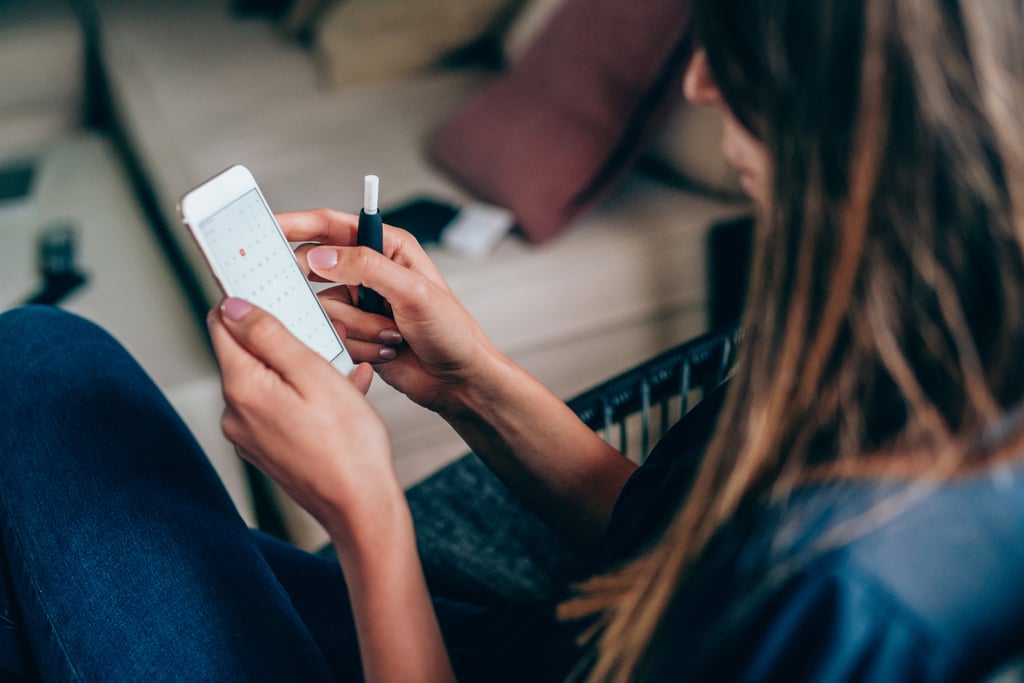According to a 2019 Gallup poll, nearly one in five 18-to-29-year-olds vape regularly [1] — that's more than twice the national average — and it's not difficult to see why. Vaping products have been designed to lure young people, and vaping is considered to be less harmful than smoking [2]. However, that doesn't mean it's safe. In August 2019, there was an outbreak of lung injury [3] associated with the use of vaping products in the US, prompting a debate over the safety of Juuls and other ecigarettes [4]. More recently, vaping has been linked with an increased risk of COVID-19 [5].
The backlash has led some states and federal agencies to enact restrictions on vaping products, and even some teens have taken a very public stand [6] against the practice. But quitting is easier said than done. The cravings and withdrawal symptoms [7] people experience after giving up nicotine often cause them to go back to vaping, Rachelle Scott, MD, medical director of psychiatry at Eden Health [8], told POPSUGAR. That doesn't have to be you — here, experts share strategies for making it stick.
Understand That Everyone Quits Vaping Differently
"Quitting is a process, and everybody's quit is different," Michael Amato, PhD, a research investigator and methodologist at Truth Initiative [9], told POPSUGAR. While some people can successfully quit cold turkey, many find it helpful to gradually cut back. Dr. Amato explained that this allows you to learn how to navigate withdrawal symptoms and establish new routines, building your confidence and coping skills for when you decide to quit for good.
Dr. Scott added that, whether you decide to quit cold turkey or gradually, it's important to know what to expect. Nicotine withdrawal symptoms typically peak one to three days after quitting and then decrease over the next three to four weeks. Knowing there's a light at the end of the tunnel can help get you through the first few days, "when the symptoms will be most intense," Dr. Scott explained.
Seek Professional Help
Again, what works for one person may not work for another, and you may need to try several strategies before you successfully quit vaping. That's OK. "The idea is to keep going even when the first, second, or third option you have tried doesn't work," Dr. Scott said. That's why you need someone in your corner to help you stay on course.
Healthcare professionals like counselors and coaches are specifically trained to help people quit, Dr. Amato explained. They can help you understand how vaping affects your body, design a plan that's tailored to your needs, hold you accountable, and provide encouragement when things get rough.
Identify Your Triggers
Everyone's triggers are different, and pinpointing your own is an important first step in quitting. "For some people, it's being around friends," Dr. Amato said. "For other people, it's stress from work, or relationships, or any of the hundreds of things there are to be stressed about right now."
Once you know the circumstances in which you're most likely to vape, you can avoid situations that make you crave your Juul, Dr. Scott explained. Or, if a trigger simply can't be avoided, you can come up with a strategy for dealing with it, like creating a calming playlist for your stressful commute.
Have a Strategy to Overcome the Cravings and Withdrawal Symptoms
Now's the time to make a list of things you can do to distract yourself when you feel like you're starting to struggle. "If you're unprepared, you might not know what to do to reduce the cravings or withdrawal symptoms other than to vape," Brian Wind, PhD, chief clinical officer of JourneyPure [10], told POPSUGAR. And, as Dr. Amato noted, "sneaking a puff here or there simply doesn't work." The rush of nicotine will only fuel your addiction.
Because vaping sends feel-good signals to the brain, Dr. Scott suggested finding other activities that make you feel good that you can do instead. You might try learning a new hobby, practicing deep breathing or mindfulness, listening to music, or journaling — all of which can help you deal with any obtrusive or obsessive thoughts about vaping. Distractions like chewing gum can also be beneficial.
Try Nicotine Replacement Therapy
Nicotine replacement therapy can help you quit vaping by gradually reducing your nicotine intake over a period of time. When you use something like a patch or gum, "your brain continues to receive nicotine at lower and lower doses so that [you do] not experience withdrawal symptoms the same way someone quitting cold turkey does," Dr. Scott said.
Dr. Amato added that nicotine replacement therapy can help you step down without you physically needing to vape. This is often helpful because the objects and routines you associate with vaping can be powerful triggers in and of themselves.
Know Your Why and Remind Yourself of It Often
Staying focussed on the reasons you wanted to quit vaping can help get you through the most challenging parts of the process. Dr. Amato suggested saying these reasons out loud like a mantra, while Dr. Wind recommended writing down all the positive aspects of your life that don't involve vaping, as well as the things you can do when you quit. "Put this up somewhere that you can see every day to motivate yourself to stay on the journey to quit vaping," he said.
Surround Yourself With Supportive People
Having a support system is crucial. "For many people, quitting vaping can be a very lonely experience, and that's unfortunate because it doesn't have to be," Dr. Amato said. Although it's entirely possible to quit by yourself, having people to encourage you makes quitting easier.
If you tell your friends and family, they can offer support by not vaping around you, avoiding places where there may be other people vaping, and showing you tough love, Dr. Wind explained. They can also be a pillar of support when you're experiencing intense cravings or withdrawal symptoms.






